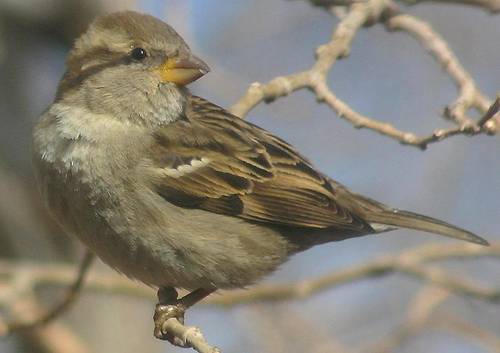

In coastal Alaska and British Columbia birds are dark sooty brown with heavy breast streaking (photo above). May be 3-4 species, rather than just one. Spend most of their time foraging on the ground or low bushes.ĭescription and voice: A large stocky sparrow the size of a towhee. Then, after all other birds have lost interest, Fox Sparrows may stay perched up in the open as the bird in the photo above. They stay hidden but eventually respond to pishing (making "psh, psh…" sounds, squeaks kissing the back of your hand, tooting calls of pygmy owls, smacks, etc.). In winter found in chaparral, dense tangles. In summer that includes brushy openings in mountain and boreal forests. Habitat and habits: Fox Sparrows are found in scrubby habitats. Winter along the West Coast and Southeast. Range: Breed in the mountains of the West (Alaska to California, Rocky Mountains-Colorado to northern British Columbia) and across northern Canada. The Eastern form of Fox Sparrow has foxy orange striping on pale gray upper parts, more colorful than the Eastern Song Sparrow. Fox Sparrows are larger (towhee sized) and less patterned. When they fly away House Finches fly up into trees, Song Sparrows fly down under shrubs. Similar species: Superficially look like female House Finches, but stay on the ground. In summer they switch to primarily insect matter, so may not visit your feeder then. At your feeder Song Sparrows eat white proso millet and smaller seeds and fruit. Likes large platform feeders to hop around in. put-on-your-teakettle, please." Across North America the pattern of the beginning of the song (ta-ta-ta-DAAA…) is easily recognized.įeeder type and food preference: Generally seen on the ground under the feeder, or searching under bushes for food. It has been described as singing: "Madge, Madge, MADGE!. The musical song (sung most of the year but not mid-winter) starts with a couple of short notes, a louder drawn out buzz, and a final loose jumbled trill. Fairly heavy streaking on the sides merge to a spot on the center of the breast. There is a wide dark stripe on the side of the white throat. The face is rather gray with a pale eyebrow line. The lower photo is a paler bird from southern California. The top photo above shows a dark rusty form from the Pacific Northwest. Throughout its range is quite varied in size and coloration. Do not form flocks, but can be numerous in wet swampy areas.ĭescription and voice: A medium-sized sparrow with a longer, rounded tail. Hop on the ground under bushes in gardens. They are common in marshes and in backyards landscaped with hedges or larger bushes. Habitat and habits: Song Sparrows inhabit damp and shrubby habitats. Migratory forms breed north throughout Canada, winter across southern states and into northern Mexico. Range: Resident in in coastal Alaska and West across the mid-latitudes of the United States. But House Finches have strongly streaked under parts (see House Finch below). About the same size and overall gray-brown color similar to House Finches. Pairs stay together throughout the year, aiding identification.

Similar species: In towns not likely to be mistaken for anything else. They also like canary seed and German millet. Their favorite birdseed is white proso millet. House Sparrows eat many types of small seeds. Their calls are the same, but individual "chirp" notes, more rapid when excited and in noisy flocks.įeeder type and food preference: House Sparrows have rather weak feet, so they prefer eating from the ground or on trays on platform and hopper type feeders.
#Finch small brown bird series#
Their song is an incessant and monotonous series of "chirp" and "chi-rup" notes. There is a broad pale eyebrow back from the eye. The crown is gray and chestnut extends from behind the eye to the nape and back.įemales and immature birds are dusty drab gray-brown, darker on the back and wings. In all plumages males have a small black mask and chin in breeding plumage the black throat extends to the breast. The wings are brownish with chestnut tones and one broad white wing bar. Males in breeding plumage (photo above) have gray bodies, rump and tail. They have short necks and their heads are rather flat, not showing much of a forehead bump. House Sparrows form noisy active flocks.ĭescription and voice: House Sparrows are rather small sparrows. They nest in crannies in buildings, street lights, barns, as well as nest boxes. Wherever people live, House Sparrows follow. Habitat and habits: The primary habitats of House Sparrows are towns, farms, horse stables, strip malls, urban centers. Range: Introduced from Europe in the mid-1800s, House Sparrows are found across North America from mid-latitudes in Canada south through Mexico.


 0 kommentar(er)
0 kommentar(er)
